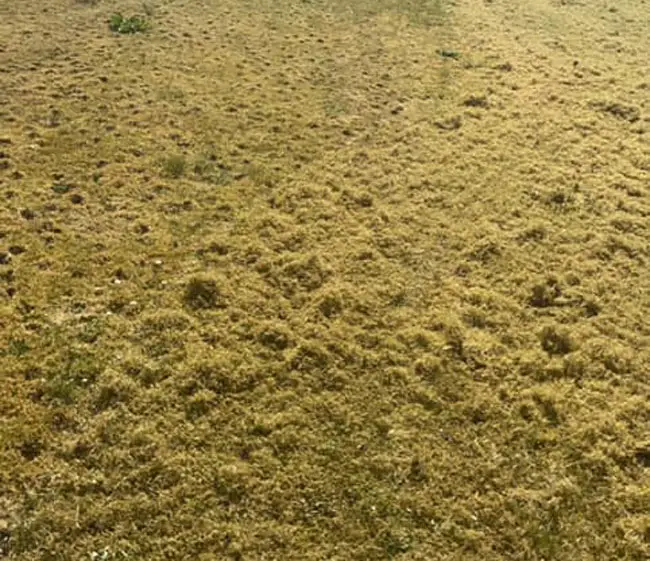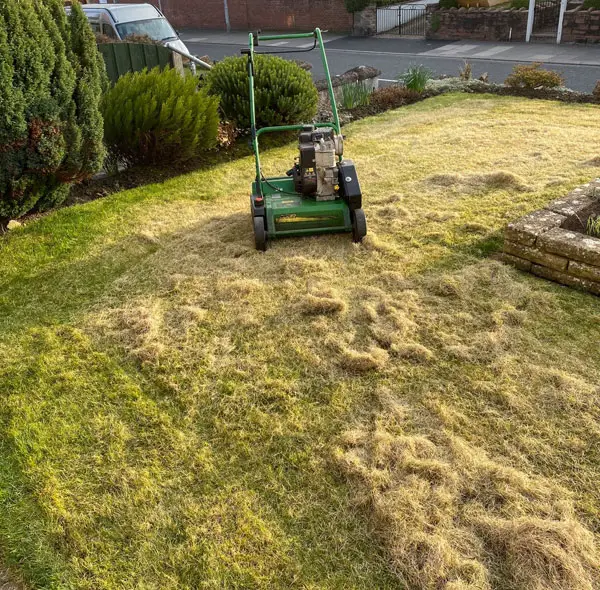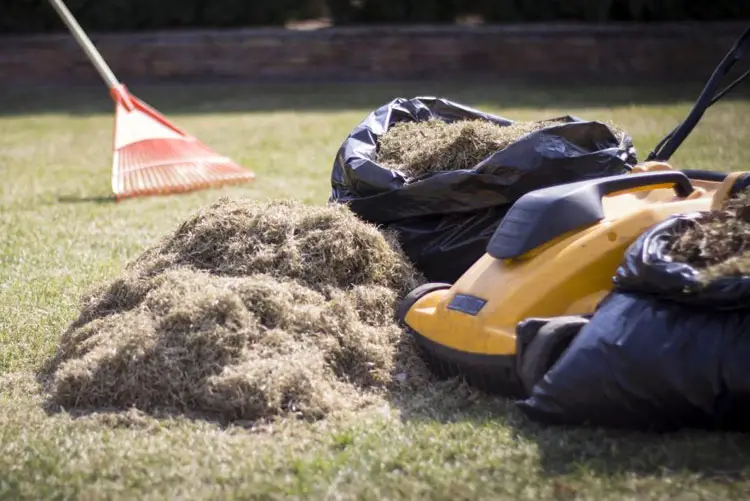People sometimes referred to scarifying as dethatching. The purpose of scarifying is to remove the thatch from the lawn. Thatch is the build-up of organic material, grass cutting, and dead moss on the soil’s surface. You can also get subsurface thatch which is further down the soil profile.
The reason for you to relieve the thatch is that it can sit wet in the winter. This will provide an ideal breeding ground for moss. It also stops air and water from penetrating the soil. So, you need to get rid of them from time to time and keep them at a manageable level.
What Does It Mean To Scarify Your Lawn?
There are many capillaries or pores in the soil, and underground water often rises along these capillaries to the ground. To preserve the underground water, you should loosen the ground soil and destroy the capillaries on the soil surface to reduce water evaporation.
By carry out the scarifying task, it will enable the lawn to get some air and breathe. It will also help to rejuvenate the shoots and allow the sorts of thickening.
Should You Mow Your Lawn Before Scarifying?
To get the optimum result, you should mow weeds first before scarifying. Through mowing, you can eliminate pests and grass seeds. However, if you are lazy or do not wish to consume too much physical work, you may skip the mowing process.
For me, I always mow the lawn first before scarifying it. Because through my experience, I found that doing this will break the grasses into small pieces, the soil block will become smaller, and the ground will get denser. Besides, it will reduce the amount of material that gets out from my lawn.
You can also determine whether to mow your lawn according to the growth of the grass. Details are as follows:
- Some grass growth and underground root systems are very developed. Therefore, you will need to mow them first. This is to prevent your lawn from being entangled in the machine.
- You can determine some dwarf grasses with underdeveloped root systems depending on the growth range. If the growth area is sparse, it is not necessary to mow them. If the growth is dense, it is necessary to clean them first.
Benefits You Can Have For Scarify Your Lawn
1. Effectively protect soil moisture
According to the knowledge of physics, the capillary phenomenon is prone to occur when the soil is dry, and it may turn into hard soil blocks. This will cause the evaporation of water in the soil. Through scarifying, it can help to reduce the generation of the capillary phenomenon, which is beneficial to protect the water in the soil.
2. Make lawn better absorb nutrients and water in the soil
Because lawns absorb nutrients mainly in the surface layer of the soil, and the roots of the surface layer of the lawn getting old with the extension of the growth period, thereby reducing the ability to absorb nutrients and water. The soil is scarified to cut off some old roots on the soil’s surface and make them germinate new roots, which will better absorb nutrients and water.
3. Get rid of pests and diseases
The soil contains disease and insects. Through the mechanical action of scarifying, we can kill those insects or get rid of the mycelium of the disease to inhibit the growth of the disease from your lawn.
4. Increase soil porosity
Loosening the lawn can increase the porosity of the soil. It can also make the root system better carry out the gas exchange. Besides, it can also enhance the water storage capacity during rainy days.
How To Scarify Your Lawn?
Before starting your work, you will need to have some tools and equipment ready.
What you need to prepare beforehand are:
- Lawnmower – to cut the grass to a short level.
- Scarifier – If you don’t have it. You can do it by hand with a rake, but this will be hard work for you.
- Leaf Rake or Blower – to clean up the thatch.
- Grass seed – Overseed your lawn afterward.
The Whole Process
First, you can use the lawnmower to mow your lawn. You should mow the grass to a really close cut to make sure that they become short. This will make less waving grass knocking around under the scarifier later. Your scarifier will also have less work to do, and it won’t damage the grass too much.
Second, it is time for you to use your scarifier. The scarifier is just looked like a lawnmower, but its function is different from a lawnmower. When you start to scarify with the equipment, it can be ferocious. You will think you are just completely sabotaging your lawn, and it is now just become a mess.
But you do not need to worry much because after scarifying, in 4-6 weeks, when the new shoot starts to grow, you will get amazed by how neat your lawn turns into.
You can do for 3-4 passes. Do those passes is to get as much thatch as possible from the lawn. After that, you will see many stuff come off the lawn, such as the dead grass, moss, and all sort of debris.
Once finish scarifying, you need to clear up the thatch. You can use a leaf rake or a blower to do the work.
Now, use back the lawnmower to trim the grass back to your lawn. Then get your grass seed and overseeding them on the lawn. You should distribute the seeds evenly on your entire lawn. Your lawn will have new growth of grasses from the seeds.
After overseeding, just sprinkler water on the lawn. You are done. Just wait for 4-6 weeks, and you will have a brand new lawn.
It would be best to remember that it is compacted when the soil is dry, and it is not easy for you to scarify. When it is watered, it becomes soft and easy to loosen the soil. This can help in reducing labor intensity and improving labor efficiency.
When Is The Best Time To Scarify Your Lawn?
Spring and autumn are ideal times for you to scarify your lawn because, at that time, the weather is warm and moist. It would help prevent scarifying your lawn during winter as the weather is cold, which is not the right time to carry out the task.
What Is The Difference Between Raking and Scarifying?
Raking is the process of turning the soil with a rake or the plow driven by the tractor. Compared with scarifying, raking is shallow soil dethatch, and the depth generally does not exceed 18-22 cm; while scarifying is to remove the thatch from the lawn from time to time to keep them at a manageable level.
The advantages of raking mainly manifest in turning over the soil, and sun-drying can discharge toxic gases. It will also turn insect eggs and germs into the deep soil and get killed.
Besides, raking also turning the surface straw and root stubble residues into the deep layer, which is beneficial to the grasses to grow healthily, improve water storage capacity, etc.
Scarifying is a kind of mechanized soil preparation technology that uses a piece of lawnmower-like equipment as the power to loosen the soil deeply without disturbing the original soil structure.
The purpose is to break the bottom of the plow and loosen the soil without destroying the soil layer. The process will only loosen the soil without turning the soil, and the depth can reach 25 to 30 cm.
What is the Difference Between Scarifier and Aerator
Scarifier is a vertical blade that will fling round driven by the motor. That will rip that thatch out. The main function of a scarifier is to dethatch the debris on the lawn. It is also used to de-compact the soil to allow more oxygen, water, minerals, and nutrients to enter deeper into the soil. It allows the roots to chase them. Push away grasses and fill the space of your lawn. By pushing the grasses outward, it gives grasses a chance to multiply.
It would be best if you used an aerator to aerate your lawn always to look green and healthy. Compaction results from downward pressure on soil from foot traffic, play, lawn care equipment, and more.
In fact, a compaction layer as thin as 0.25″ can block the flow of water and nutrients. In addition, it also restricts the exchange of oxygen and carbon dioxide.
In summary, aerators’ main purpose is to make pores for the soil flow in water and oxygen. It also helps to de-compact the soil, while scarifiers can also perform these tasks with the additional function of detaching the lawn to grow healthily.




